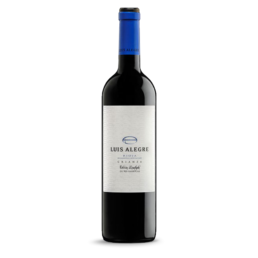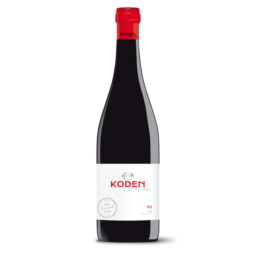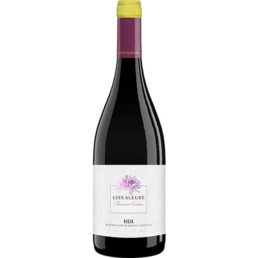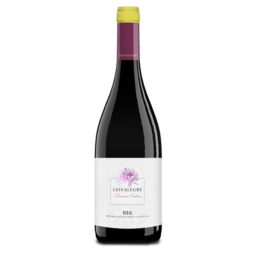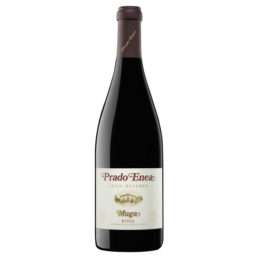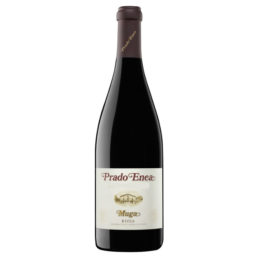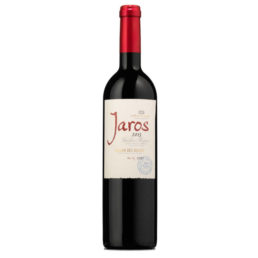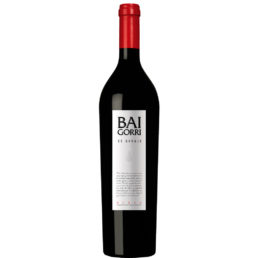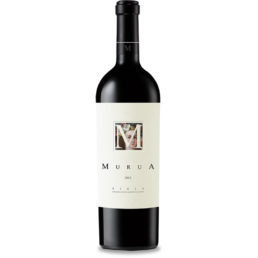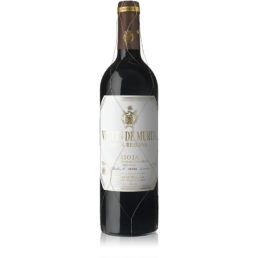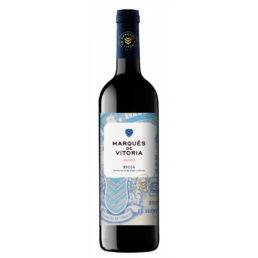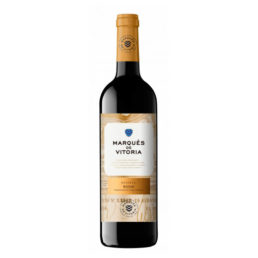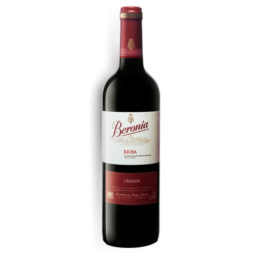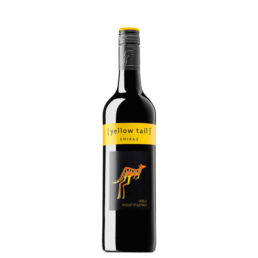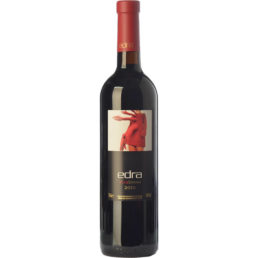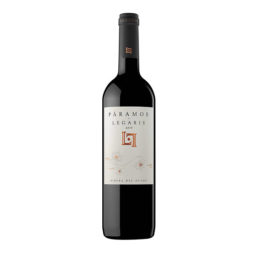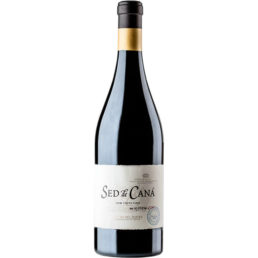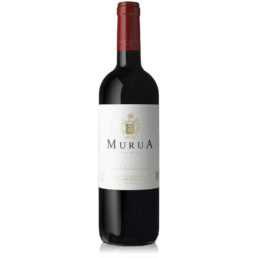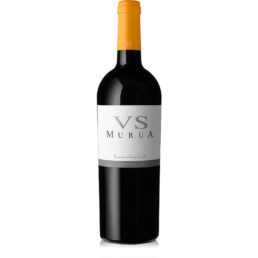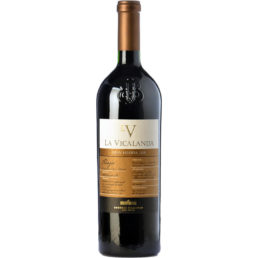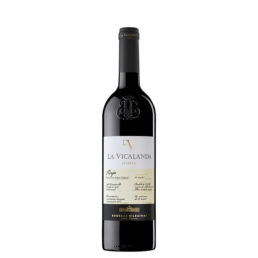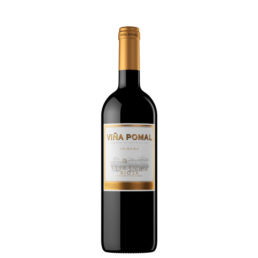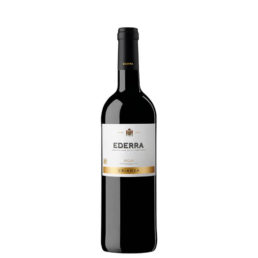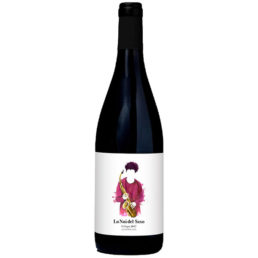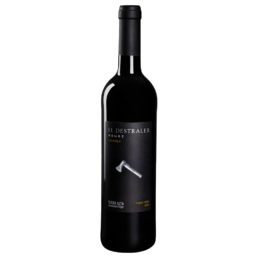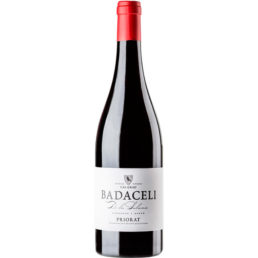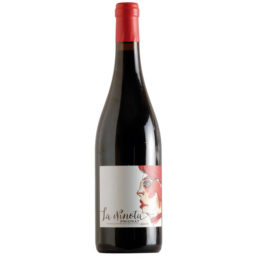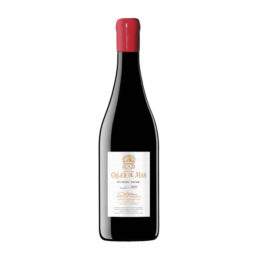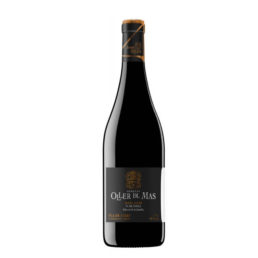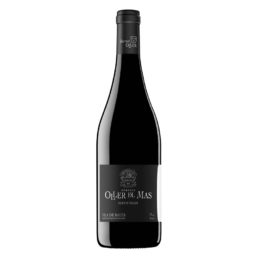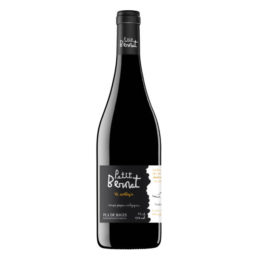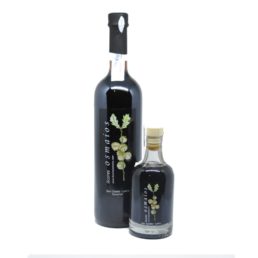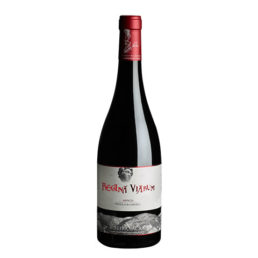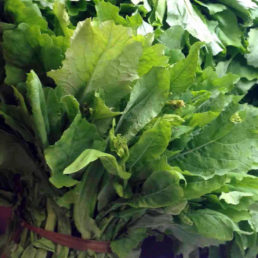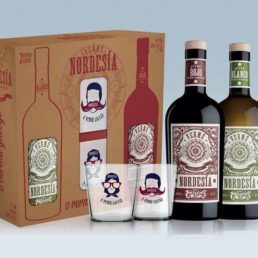meats
-
Luis Alegre Crianza red wine 2016
Luis Alegre Crianza It born from grapes from vineyards of an average age of 30 years old. These are found on farms of soil clay and limestone to about 500 meters of altitude.Following a process of manual harvest, the beans macerated and fermented for about 15 days. Once the malolactic fermentation, Luis Alegre Crianza is transferred into American oak barrels and French.In the same is made the foster, that continues for about 14 months. The barrels are new and second -, third and fourth year. The 80% of these are of american oak and 20% remaining French oak.Luis Alegre Crianza finally rests a year in bottle before release for sale. -
Red wine Luis Alegre – KODEN 2018
Concept: techniques of making high range wines in grapes from young vineyards.Vineyards 20-25 years old.Parenting 9 months in new oak barrelsAcknowledgements Peñín 90 -
Luis Alegre Roughing red wine carbonic maceration 2018
With a limited production of 3.000 bottles, Luis Alegre Roughing 2017 it is elaborated with grapes from vineyards of 60 years of age. Once harvested manually, is encuban whole bunches and these undergo the technique of the carbonic maceration. After pressing, for obtaining of the must-wine, it is carried out a controlled fermentation between 16 and 17 degrees celsius during 4 the 5 additional days.After a process of stabilization between 4 and 5 weeks, the wine rests for a single day in French oak barrels for, below, proceed to grinding and bottling. -
Luis Alegre red wine carbonic maceration
Selection of grapes of viura from vineyards 35 years old.Vintage manual.Vatting of bunches with stems in stainless steel tanks and a “bed” of white wine to not “blow out” the first bunches.4-5 days of carbonic maceration, pressing and end of fermentation.AcknowledgementsGuide Gourmet 92Success: healthy, ripe grapes since there is no breeding to “cover up” defects.Always among the best of Spain in the two contests, the most prestigious wines young -
Red wine Muga – Prado Enea Gran Reserva 2010
The large reserves are wines made to last for a long time, and icons of excellence. Prado Enea Gran Reserva 2010 it is made by Muga, with the last grapes enter the wine cellar to ensure an even ripening perfect, and it is born of a vintage exceptional: the 2010 (rated Excellent). Great aging potential.Elaboration Next to the grapes Torre Muga, the grapes for Prado Enea are always the last to enter the winery. With this we ensure an optimal maturity. The grape is fermented is always in tanks of oak 10.000 Kg. of capacity without temperature control or addition of yeasts. The maceration is variable but can last up to twenty days. The ageing of this wine is twelve months in deposits of oak 16.000 liters, thirty six months in oak barrels (minimum), and thirty six months (minimum) in the bottle. After the aging is performed by a light clarification with egg whites.Pairing This is a wine that can pair with stews, meats and even use it as a cup.Production 90.000 bottlesAwards97 by Robert Parker (The Wine Advocate)94 by Guía Peñín de los wines of Spain -
Red wine Muga – Aeneas Carbonic Maceration
Bodegas Muga, that has achieved one of its best wines in its range with the came Aeneas, a young red wine made with the ancient method of carbonic maceration.Jorge Muga, the winemaker of the family saga has wanted to maintain the old traditions of Rioja in the development of the single young red wine made by the winery. In your wine making, carbonic maceration involves leaving the bunches of Tempranillo fermenten integers, without despalillar or crush. Despite being a very old technique in The Rioja, is growing the demand for these wines, craft, known on earth as harvesters wine or wines of the year, that is your optimum intake is recommended between the year and year following its harvest. They are fruity wines, with a freshness and some acidity, red and violet-very intense, long in the mouth due to the presence of soft tannins and glycerin. -
White Wine Viña Albina Reserva
White Wine Viña Albina ReservaSelected wines of the best vintages. Representative of the classic wines of Rioja Alta. elaborated with grapes 80% Tempranillo, 15% Mazuelo, 5% Graciano from Cenicero, Sonsierra and Villalba de Rioja.ElaborationClassical vinification of grapes destemmed and pressed with long maceration and control fermentation.FosterParenting 24 to 30 months in american oak barrels with the appropriate rackings. Aged in the bottle for a minimum of 12 months before marketing. -
Red wine Chafandín
It is a wine exclusively from grapes from the Payment of Chafandín, 100% Tempranillo (Tinto Fino) and whose vineyard has an approximate age of 40 years old. It is grapes of extraordinary, small diameter, with a skin of greater thickness which gives the greater concentration in the maceration. The Malolactic is done in barrel new French oak of 300 liters, and then the wine stays in ageing in the same barrels during the time that it is deemed appropriate ( according to the add ) and that is usually between 16 and 21 months.Foster
Malolactic in French oak barrels 300 liters and parenting 21 months in new barrels and one year French oak 300 liters.
Fermentation
During 12 days at a temperature of 26ºC.
Time of Maceration
17 days with their skins
-
Red wine Viñas del Jaro – Birds
This is our Estate wine as it comes from the grapes of several payments, and shows the general nature of the set of all of them. The different wines are assembled after aging in barrel new and second year, that is usually the 15 months. The main variety used is Tempranillo, with smaller contributions of Cabernet Sauvignon and Merlot. On the nose it develops aromas of frutillos of the forest on nuances of balsamic and menthol, with spicy notes and fine woods. The palate is broad, balanced and with a persistent aftertaste very fruity and mineral character by retronasal.Foster
17 months in new barrels and one year French oak 300 liters.
Fermentation
During 12 days at a temperature of 26ºC.
Time of Maceration
14 days with their skins.
-
Red wine Bodegas Baigorri – Baigorri de Garage
Red wine made from vineyards very old, low production, which makes this one of the wines of high-end and more exclusive this winery, Grapes of the variety Tempranillo hand-selected, grain by grain, using selection tables and vibration. Long macerations and fermentations in tinos wood. Malolactic fermentation, along with its lees in new French oak barrels. A tasting panel decides the time that this wine stays in the barrel.PairingTo accompany any kind of dish, especially the desserts. Also, with grilled vegetables, meats, cooked dishes of a high quality restoration.Awards92 points guide Peñín92 points J. Suckling -
Red wine Bodegas Murua – M Murua
To develop M Murua, the grape comes from an exclusive selection of the oldest wine Bodegas Murua has in the area of Elciego:
Caralciego: 70 years and a yield of 1.700 Kg./Has.
Velasquillo: 63 years and a yield of 3.000 Kg./Has.
HarvestIt is carried out manually and in small boxes.WinemakingMalolactic fermentation in new barrels of French oak high toast.AgingAging in barrels of French oak (80%) and american (20%) during 14 months. -
Red wine Bodegas Murua – Veguín of Murua Gran Reserva
The grapes destined to the wine Veguín of Murua have been selected from vineyards very old, some nearly a hundred years old, located at the foot of the Sierra Cantabria, in the best farms of Bodegas Murua. This particularity limits the production to 2.500 Kg./has. The bunches are collected by hand by professionals who suppress the fruit defective (or immature). Then, in the own winery, it culminates the process with a new selection in the tape.Veguín Gran reserva is only produced in vintages of exceptional and limited editions.Limited production to 11.500 bottlesFoster A slow process of minimum 8 years of ageing between oak barrel and bottle. -
Don Pio Parenting (Winemaker Rioja)
Red wine produced in La Rioja by Bodegas Los Tinos. Tasty, fruity and full-bodied. -
Marqués de Vitoria Crianza 2014
Production/winemakingThe grape is harvested, selected, destemmed and fermented at controlled temperature in order to subsequently raise during 12 months in american oak barrels. Fine-tuned end in the bottle in the interior of the cellars.PairingIt is easy to pair with any type of meat. Grilled mushrooms. Some fish a lot of flavor or fatty, like tuna or cod. Cheese emmental or gruyere. Good with rice with mushrooms. -
Marqués de Vitoria Crianza 2015 (Magnum)
Production/winemakingThe grape is harvested, selected, destemmed and fermented at controlled temperature in order to subsequently raise during 12 months in american oak barrels. Fine-tuned end in the bottle in the interior of the cellars.PairingIt is easy to pair with any type of meat. Grilled mushrooms. Some fish a lot of flavor or fatty, like tuna or cod. Cheese emmental or gruyere. Good with rice with mushrooms. -
Marqués de Vitoria Reserve 2011
From of strains between 25 and 30 years of age. Remains 24 months in new French oak barrels followed by an ageing in bottle before release onto the market.PairingIt is easy to pair with any kind of meat and grilled mushrooms. Some fish a lot of flavor or fatty, like tuna or cod. Cheeses of medium healing; emmental and gruyere. Pasta with tomato and/or cheese.AwardsGolden Bacchus, Awards Bacchus 2016 (Spain)Gold Medal, World of Wine 2016 (Germany) -
Red wine Beronia Crianza 25 cl.
VINIFICATION AND AGEING After a slow Alcoholic fermentation, performs malolactic fermentation, and remains 12 months deposits. Subsequently this wine was transferred to barrels mixed: staves of american oak and funds of French oak, where it remains a minimum of 12 months. This is followed by a time in bottle before release onto the market.PAIRING It is the ideal companion for pasta dishes, vegetables and meats. -
Red wine Beronia – Beronia 3/8 Foster 2015
VINIFICATION AND AGEING After a slow Alcoholic fermentation, performs malolactic fermentation, and remains 12 months deposits. Subsequently this wine was transferred to barrels mixed: staves of american oak and funds of French oak, where it remains a minimum of 12 months. This is followed by a time in bottle before release onto the market.PAIRING It is the ideal companion for pasta dishes, vegetables and meats. -
Vino Tinto Yellow Tail Syrah – Australia
The philosophy behind the brand Yellow Tail is to offer wines that are simple and aimed at anyone who wants to enjoy a glass of wine with friends without major complications. Shiraz is the variety most widespread in Australia, so this wine red wine is the maximum expression of Yellow Tail. Yellow Tail Shiraz is a wine that is intense without being excessive, very easy to drink even as young wine.DEVELOPMENT (VINIFICATION) The Shiraz from Yellow Tail is made from grapes from vineyards of the highest quality. Once pressed and being removed from their stems, the grapes are fermented with the skins and in contact with oak wood. Its temperature-controlled fermentation ensures extraction of all the flavor, the color and tannins typical of the variety. The wine is bottled in the cellars of the family Casella, in Yenda, New South Wales.PAIRINGAccompanying Yellow Tail Shiraz with a good steak or a bbq. -
We drink red wine 2015
Awards89 Points Guide AkataVino WineXtreme ed. 2017 -
Red wine Edra Xtra Syrah
Edra XtraSyrah 2014, variety of balanced year after year, with a freshness and ripe fruit as a response to the summer balanced 2014; powerful, with personality and smoothness at the same time. It offers intense and deep aromas of menthol because of the variety and toasted, roasted and chocolateblack, due to the terroir and the sunny Hoya de Huesca in the foothills of the pyrenees. Silky and with a long and honest aftertaste. The rest in French oak and a little american,with batonagge with their own lies, given the maturity and golosidad necessary.Vintage grape own, selection of plot, vintage manual 8 September.Fermentation maceration in cold chamber, delestage open and closed.Malolactic barrel French.Aging ”batonnage” with the addition of the lees 12 months in French oak selection andAmerican.Label the work of the artist Mª Pi Rivera -
Red wine Wastelands of Legaris
Moors of Legaris is an author wine elaborated with the best moors of Ribera del Duero: Moradillo de Roa, Peñafiel and Pesquera del Duero, with a profile of the modern court which seeks the maximum varietal expression. Maturity and balance, with oak presente in flavor and texture.Moors of Legaris reflects the extreme character of the Tempranillo in an extreme zone, the Ribera del Duero.Limited edition of 12.000 bottles.DEVELOPMENT (VINIFICATION)The grape is transferred quickly to the winery to maintain its qualities. After de-stemming, the grape reaches virtually the whole of the deposits of stainless steel, drafted separately the different origins of the grapes.We do a cold pre-fermentation maceration (10 ºC) during 3-4 days in order to extract aromas and colour and then let it gradually increase the temperature. The wines start the alcoholic fermentation and natural way to express the typicality of our different terroirs the made with their own indigenous yeasts.Fermentation temperatures range between 26 and 28 ºC. The devatting or drawing off is performed between 14-16 days from the vatting.In order to respect the fruity character of our Wastelands of Legaris, parenting media in the barrel has been 9 months in bordeaux barrels, selected in a ratio of 2/3 French oak of fine grain and 1/3 american oak, in both cases, with a 30% of new barrels.This wine has not been stabilized by cold, so that for their production of natural might present sediment. To fine-tune the wine was a soft clarification with egg white and bottled in September 2016.VINEYARD (VITICULTURE)In our Wastelands of Legaris we want to show the extreme character of the Tinto fino grown in high altitude, on flat surfaces and extensive wastelands. On the abundant limestone of the moors have been developed preferably red soils, evolved, with an alkaline pH and a high proportion of carbonates.We have selected 3 moors in different geographical areas:● Pesquera de Duero, in the province of Valladolid, with altitudes understood between the 867 and the 894 meters. This plot was gathered the 27 September.● Penafiel, in the province of Valladolid, with an altitude of 890 meters. This plot was gathered the 4 October.● Moradillo de Roa, in the province of Burgos, with altitudes understood between the 958 and the 973 meters. This last wasteland is gathered the 18 October.AWARDS91 POINTS GUÍA GOURMETS 201990 POINTS GUIDE PEÑÍN 201990 POINTS GUIDE 365 DAYS (LIVE THE WINE) 201990 POINTS ROBERT PARKER 2018 -
Red wine Blank
Production25.000 bottlesElaborationSelection table for bunches, de-stemming and further selection of grains. Maceration at controlled temperature, alcoholic fermentation in vats of wood 50 hl and 100 hl. Malolactic fermentation in vats of French oak.FosterHe remained 16 months in new barrels of French oak and 6 months in wooden casks. -
Red wine Viñas del Jaro – Thirst of Cana
Some wines from certain sectors of our vineyards older of the Payment of Chafandin, throughout the process of parenting, in certain vintages, move more elegance and personality in the successive tastings, it exists as a “Blow of Heart“. These barrels, are selected in the first six months after each harvest and separate to make a custom track. The year that occurs this event is bottled under the brand name Thirst of Cana, and gives origin to the wine more emblematic of the Winery.Foster
Malolática in French oak barrels 300 liters of parenting 26 months in barrels
Fermentation
During 21 days at temperatures of 14-16ºC.
Time of Maceration
20 days in deposits of 3.000 liters
-
Red wine Sembro 2018
It is a wine with a fruity character, that tries to express the primary characteristics of the Tempranillo variety from our own Farm. It is reinforced with a small step-by-wood is usually the 4 months. It is a fruity wine, sweet and juicy in the mouth, but at the same time cool, with a few sweet tannins, mature and that make it very nice, envelope and without hardness tannic.Foster
4 months in new barrels and one year French oak 300 liters.
Fermentation
During 10 days at temperatures of 25 ° C.
Time of Maceration
7 days with their skins
-
Red wine Bodegas Murua – Murua Reserva
Murua Reserva it is a wine of guard, based on delivering the best performance among the tertiary aromas and the wide range of aromas offered by our plots of the Rioja Alavesa. Murua Reserva is a wine long and complex that comes from a patient work of viticulture respectful with the environment and with the tradition of The Rioja.
Made with Tempranillo, Graciano and Mazuelo and temperature-controlled fermentation with a timely follow-up of the maceration. The malolactic fermentation and decanting is carried out in barrels of French and american oak.
Vinification and Ageing:Temperature-controlled fermentation. Timely follow-up of the maceration. The malolactic fermentation and decanting is carried out in barrels of French and american oak. 24 months in barrels of French and american oak (barrels with a maximum use of 3 years old). The aging in bottle of our Reserves to meet a minimum period of 5 years in the bottle underground wine cellar to achieve the optimum degree of maturity and roundness.Awards92 points Peñin guide -
Red wine Murua VS 2017
Expressive and personal, VS it is the last blend created by Bodegas Murua. The winery continues its philosophy of Rioja purely craftsman, but looking, at the same time, a modern style that inspires a wine full of freshness and fruit undertones.
The VS de Murua is a wine that is velvety, that illustrates very well the balanced blend of the fruit of our grapes in the aroma of mount alava minty and floral.
Foster of 16 months in French oak barrels (30%) and american (70%). -
Red wine ecological Ezar – 714 Ezar Grenache 2015
This wine has been subjected to a process of aging in barrels of French oak for a period of 18 months, after which has remained in the bottle to the highest level a minimum of 18 months more.Production100% ecological -
Red wine – The Vicalanda Gran Reserva 2010
The Vicalanda Gran Reserva, maximum expression of the "terroir" one of the most privileged areas of the D. O. Ca. Rioja, Haro. The Vicalanda Gran Reserva is a red wine pioneer "wines of high expression", crafted from a selection of las best grapes from our own vineyards.The name of The Vicalanda comes in your home on a small farm of 10,5 hectares the property of Bodegas Bilbaínas.DEVELOPMENT (VINIFICATION)Gentle crushing-destemming, vatting and fermentation with a long maceration. En total, 2 years of ageing in casks bordeaux (225 l) French oak Allier new (70%) and medium toast. Minimum 3 years of ageing in bottle bordeaux.The Vicalanda Gran Reserva is a red wine that represents the ultimate expression of the know-how of the cellar. The best ageing in oak and bottle dota of maturity, finesse and elegance of the Tempranillo, respecting the identity of an area emblematic.VINEYARD (VITICULTURE)The vineyards from which comes the Vicalanda are located in a privileged enclave of the municipality of Haro (Rioja Alta) and comes from our best farms, Crow 4, Vicuana and Zaco, of the D. O. Ca. Rioja. In its most, it comes from vineyards facing the south, which maximizes the exposure to the sun and helps ripening and more intense. The soils are calcareous and cascajosos and therefore poor, deep and well-drained. The vineyards are planted in glass and are grown under principles of sustainable agriculture. Vineyards between 25 and 35 years of age,whose returns do not exceed the 3.500 kg/ha.PAIRINGThe Great Reserve of The Vicalanda harmonizes perfectly with main courses or first strong. As for example: cheeses, deli, inlaid, soups and stews; meats of all kinds, especially the hunting, tailgating, etc.AWARDS96 POINTS GUIDE PROENSA 201695 POINTS GUÍA GOURMETS 201694 POINTS GUIDE PEÑÍN 201694 POINTS GUIDE PEÑÍN 201590 POINTS ROBERT PARKER 2015SILVER MEDAL DECANTER WORLD WINE AWARDS - 2014SILVER MEDAL INTERNATIONAL WINE & SPIRIT COMPETITION - 2014SILVER MEDAL INTERNATIONAL WINE CHALLENGE - 2014 -
Red wine – The Vicalanda Booking 2014
The Vicalanda Booking, a red wine created in 1994 that began a new style of reserve rioja, the maximum expression of the "terroir". The Vicalanda Reserve is a wine pioneer "wines of high expression", crafted from a selection of thes best grapes from our own vineyards.The name of The Vicalanda comes in your home on a small farm of 10,5 hectares the property of Bodegas Bilbaínas.DEVELOPMENT (VINIFICATION)At the time of the harvest, we made a selection to carry only the winery those grapes with ripening conditions optimal. After de-stemming and crushing took place the maceration and the alcoholic fermentation of three weeks, at a temperature of 28 ºC.The wine made the malolactic fermentation in barrels, where it is subsequently aged for 14 months. We use French Allier oak barrels, new in a minimum of 50%. At this time, the wine is trasegó several times to clean it and natural way to avoid post-treatments. The wine has an aging minimum in bottle 24 months (Reservation).VINEYARD (VITICULTURE)We select the best grapes of our plots Cuervo 4, Vicuana and Zaco, of the D. O. Ca. Rioja. These vineyards were planted with the traditional system of vine "cauldron" Rioja, they have an average age of more than 35 years and produce 2.500 kg per hectare. All the work done on these plots is done by hand, working with highly qualified staff. We get our grapes, with cultivation practices respectful with the environment, without the use of pesticides, insecticides and herbicides.PAIRINGThe Vicalanda Reserve is the ideal companion to the best meat dishes, above all, the local specialty: the roast lamb. It is also, clearly, a good ally of the cheeses or parmesanos, the ham, the hunting and the deer, the dishes of vegetables or rice with meat.AWARDS97 POINTS GUIDE PROENSA 201693 POINTS ABC GUIDE 201692 POINTS GUIDE PEÑÍN 201792 POINTS GUIDE PEÑÍN 201690 POINTS ROBERT PARKER 2016GOLD MEDAL BACCHUS - 2015GOLD MEDAL CINVE - 2016SILVER MEDAL TEMPRANILLOS TO THE WORLD - 2015 -
Red wine – Viña Pomal Centenario Crianza
Viña Pomal Centenario Crianza is a wine special, commemorative of the centenary of the brand. A perfect balance between the classic nature of a red crianza from Rioja, and a presence of fruit more noticeable.DEVELOPMENT (VINIFICATION)Viña Pomal Centenario Crianza is characterized by a vinification traditional: after de-stemming and crushing takes place the alcoholic fermentation. Maceration total is two weeks, looking for a structure of wines, soft, pleasant and with great intensity of fruit. Twelve months in american oak barrels (15% new) we bring the complexity and the maturity necessary to complete the expression of this red wine Reserve.VINEYARD (VITICULTURE)The finca Viña Pomal is made by 90 hectares of vineyards. Nestled in the municipality of Haro and less than 2 kilometres of the winery, located in one of the most beautiful areas of the city; through them we can enjoy the passage of the river Ebro through the conchas of Haro.Combine on our farm D. O. Ca. Rioja the different ecosystems in function of the variability of the soil and the sun exposure, what that translates to in a comprehensive selection of homogeneous areas. The viticulture is applied arises from a mixture between traditional rioja and the precision, resulting in a growing commitment to innovation in order to protect the nature, always under the parameters of maximum quality. The work of our own vineyards, we add a demanding grape selection of our suppliers of Rioja Alta.PAIRINGViña Pomal Centenario Crianza harmonizes perfectly with light dishes such as rice dishes, cheeses, pates, stews, vegetables, fish... in addition to the typical dishes that combine traditionally with the aged red wines. -
Wine Ederra Crianza
Ederra Crianza search for the expression of fruit and the freshness of the wines, essential for aging wines in oak. At Ederra Crianza is present Garnacha, traditional blends of the D. O. Ca. Rioja wines envejecgone with Tempranillo, contributing to this wine freshness and length, and improving its ability to aging.DEVELOPMENT (VINIFICATION)Ederra looking for the fruit expression and freshness of the wines, essential for aging wines in oak. After de-stemming and crushing, it has a maceration of approximately 15 days. The wine has an ageing of 12 months in american oak barrels,traditional in Rioja, where you complete the character fresh and fruity of this wine with notes of toast and spice of the barrel, the tannins are polished and the wine is rounded up to get ready for your consumption.VINEYARD (VITICULTURE)From vineyards located in La Rioja, from soils of gravel and clay calcareous, give the wine the structure and balance needed to comply with the required quality of the crianza wines.In this wine Ederra Crianza is present Garnacha, traditional blends of Rioja for wines aged with Tempranillo, giving the wine freshness and length, and improving its ability to aging. A key part in the vineyard has been the pruning, that made a early has insured the health of the clusters.PAIRINGEderra Crianza combines with the creamy cheeses and the flash cures. The sausages, mushrooms, dishes of beans or a tortilla of potatoes, in addition to the classic pairing: meat dishes with a vintage Rioja. -
Red wine Bielsa Ruano – The Noi of the Sax 2019
DEVELOPMENTFermentation at a controlled temperature during 7 days and maceration for 20 days. -
Vino tinto Cal Grau - Badaceli
The Badacelli is a red wine of sober and noble that collects naturally all the essence of the Priorat. After a decanting highly recommended, the garnacha and cariñena together maturity and freshness to enjoy with a red wine of profound and complex that shows one of the faces most elegant Priorat current, the one without renouncing their origins know how to adapt to the new times. -
Red wine Cal Grau – The Ninota
The Ninota Vins is the new project of Company Vineyards Iberian in Catalonia. The Ninota arises from the concern to produce wines of reduced production where the common denominator is house the different appellations of origin of Catalonia: Priorat, Montsant, Terra Alta, Penedés. We talk about wines that are a true reflection of their soils, environments and weather, putting flag a great respect for the variety.Each wine will have your style and personality, offering a great added value. Fran Vernet, winemaker Cal Grau, is the culprit of ensuring that each wine has its own style and a own personality well defined, offering a huge value added very personal.One of the successes of Vernet and the Osborne family it is The Ninota 2015. Belonging to the D. O. Q. Priorat, whose grapes main are the garnacha and cariñena, that dwell in soils on mountain of slate and licorella, with a small contribution of syrah grapes.Vinification and ageing: 4 months in barrel. -
Red wine Masdeu Scala Dei
Masdeu is a red wine from a single vineyard, one of the oldest wine from Scala Dei already working as the carthusian monks. In its production, has recovered the way you work and the ancient techniques of winemaking that had desaparecidor in Priorat, as the fermentation and refining in fats and deposits of cement. With this Book we intend to show the different faces of Grenache Scala Dei, depending on your height, soil and preparation.DEVELOPMENT (VINIFICATION)With this wine we wanted to recover a heritage of development that existed in Priorat and that takes us up to the first bottled wines of Cellers Scala Dei. So,having investigated as those bottles of the years 70 had been developed, we have vinified the Masdeu. Vintage during the third week of October, in small boxes, with the 100% from the stems in the fermentation, but with the grape pressed (not whole). Fermented in a small tank of cement 3.500 liters, imitating the peak temperature of the fermentations of the last century, without added yeast, and pressing at the own tank of cement.Foster: the 55% the wine was for 16 months in deposit of cement, the 25% wine 16 months in foudre of 1.400 liters, the 15% in the barrel of 600 litres during also 16 months and the rest in a jar buried in a wooden crate with clay during 16 months.VINEYARD (VITICULTURE)Masdeu is a vineyard terraced situated on the slopes of the Montsant, in the D. O. Q. Priorat. Is the vineyard Cellers Scala Dei has more height, comes around 800 meters at its tallest terrace. The soil is red clay in its lower part, to go to increasing the content of the limy as we are coming to the last terrace where is a floor of stones completely.. Orientation South-East, and planted during the TWENTIETH century, in 1945. It is one of the vineyards that the monks had planted Grenache from centuries ago.The add 2013 it was “the vintage“, the vintage wine preceded by a cold winter, spring, generous rainfall, cool summer at the beginning and then warm but not hot, late harvest and lack of rain during harvest, did that the maturation slow and regular,resulting in wines with body, fruit and fresh at the same time. The only but is that it was a short crop for the Grenache, because the curd was not very good.AWARDS95 POINTS GUIDE PEÑÍN 201894 POINTS WINE SPECTATOR 201790 POINTS GUIDE PROENSA 201795 POINTS ROBERT PARKER 201693 POINTS YEARBOOK OF WINES (THE COUNTRY) 20189,81 POINTS GUIA DE VINS DE CATALUNYA 2017 -
Red wine St. Antoni d Scala Dei
Scala Dei St. Antoni is a wine of a single vineyard, one of the oldest wine from Scala Dei, already working as the carthusian monks. With him we have recovered a heritage of development that had disappeared in Priorat, and that is in preparedar wine as it was produced during the years 70 or above. With this Book we aim to show the different faces of Grenache Scala Dei, depending on your height, soil and preparation.DEVELOPMENT (VINIFICATION)With this wine we wanted to recover a heritage of development that existed in Priorat and that takes us up to the first bottled wines of Cellers Scala Dei. So, having investigated as those bottles of the years 70 had been developed, we have vinified the St. Antoni. Harvest during the first week of October, in small boxes, with the 100% from the stems in the fermentation, but with the grape pressed (not whole). Fermented in a small tank of cement 3.500 liters, imitating the peak temperature of the fermentations of the last century, without added yeast, and pressing at the own tank of cement.Foster: 14 months in “foudre” 1.400 litres not new.VINEYARD (VITICULTURE)Sant Antoni de Montalt is a vineyard located above the Cartoixa Scala Dei, in a small flat terraced facade that ends at an impressive cliff on the Monastery, of ground clay, it has the shape of an amphitheater with a party-oriented This, the other on the West and the central part, facing South, is 580 meters in its lowest part, and 610 meters at its highest part, in the D. O. Q. Priorat. It is one of the vineyards that the monks had planted Grenache as five centuries ago; the plants that we see today were planted in 1945 and we can find at least two types of Grenache: Hairy and Country.The add 2013 it was “the vintage“, the vintage wine preceded by a cold winter, spring, generous rainfall, cool summer at the beginning and then warm but not hot, late harvest and lack of rain during harvest, did that the maturation slow and regular, resulting in wines with body, fruit and fresh at the same time. The only but, it was a short crop for the Grenache, because the curd was not very good.AWARDS95 POINTS GUIDE PEÑÍN 201795 POINTS ROBERT PARKER 201691 POINTS YEARBOOK OF WINES (THE COUNTRY) 20189,77 POINTS GUIA DE VINS DE CATALUNYA 201795 POINTS GUIDE PEÑÍN 201893 POINTS GUIDE PROENSA 201790 POINTS TASTING ANDREAS LARSSON 2017 -
Red wine – Oller del Mas Special Picapoll Negre (black bread)
Oller del Mas Special Picapoll Negre (black bread) 2016: BEST WINE OF CATALONIA 2019
Production: 2.387 bottleswinemaking: Fermentation of 16 days at 23 ° C with yeast own Farm. Manual harvesting to ensure the maximum quality of the grape. Maceration of 15 to 20 days with two pumping over daily.Not used press.BreedingFrench oak barrels from Allier de 500 liters, egg of concrete and jars of pottery for nine months. Subsequent aging in bottle in the cellar for a minimum of twelve months.Natural cork stopper in the country. -
Red wine – Arnau Oller, Selection of the family
Production6.446 bottlesWinemakingFermentation of 10 days at 22 ° c with llevaduras own Farm. Maceration of 15 to 30 days with two pumping over daily. Not used press.FosterBoots new oak French d'allier, Tronçais, and Nevers of 300 litres for twelve months. Subsequent aging in bottle in the cellar for a minimum of twelve months. Natural cork stopper in the country. -
Red wine Heretat Oller del Mas – Bernat Oller 2015
WinemakingGrape reception Vintage independent for each variety.Deposits Stainless steel with temperature control.Alcoholic Fermentation Use of indigenous yeasts selected at temperatures below 27 ° CWork of the pasta Traced open initiated the F.. and closed-end.Devatting or drawing off Based on the tasting.FosterFrench oak barrels of Allier, Tronçais, and Nevers of 300 liters for ten months. -
Red wine – Petit Bernat 2019
Production: 27.867 bottleswinemaking:Vintage night. Derrapado, automated and manual selection of grains. Fermentation of 21 days of 22ºC to 26ºC. Maceration of 12 days with pumping over daily.Malolactic fermentation in barrel.Foster:Oak barrels of French origin Tronçais. Capacity 300 litres for three months. Awards:Wine guide of Catalonia 9.38 point












